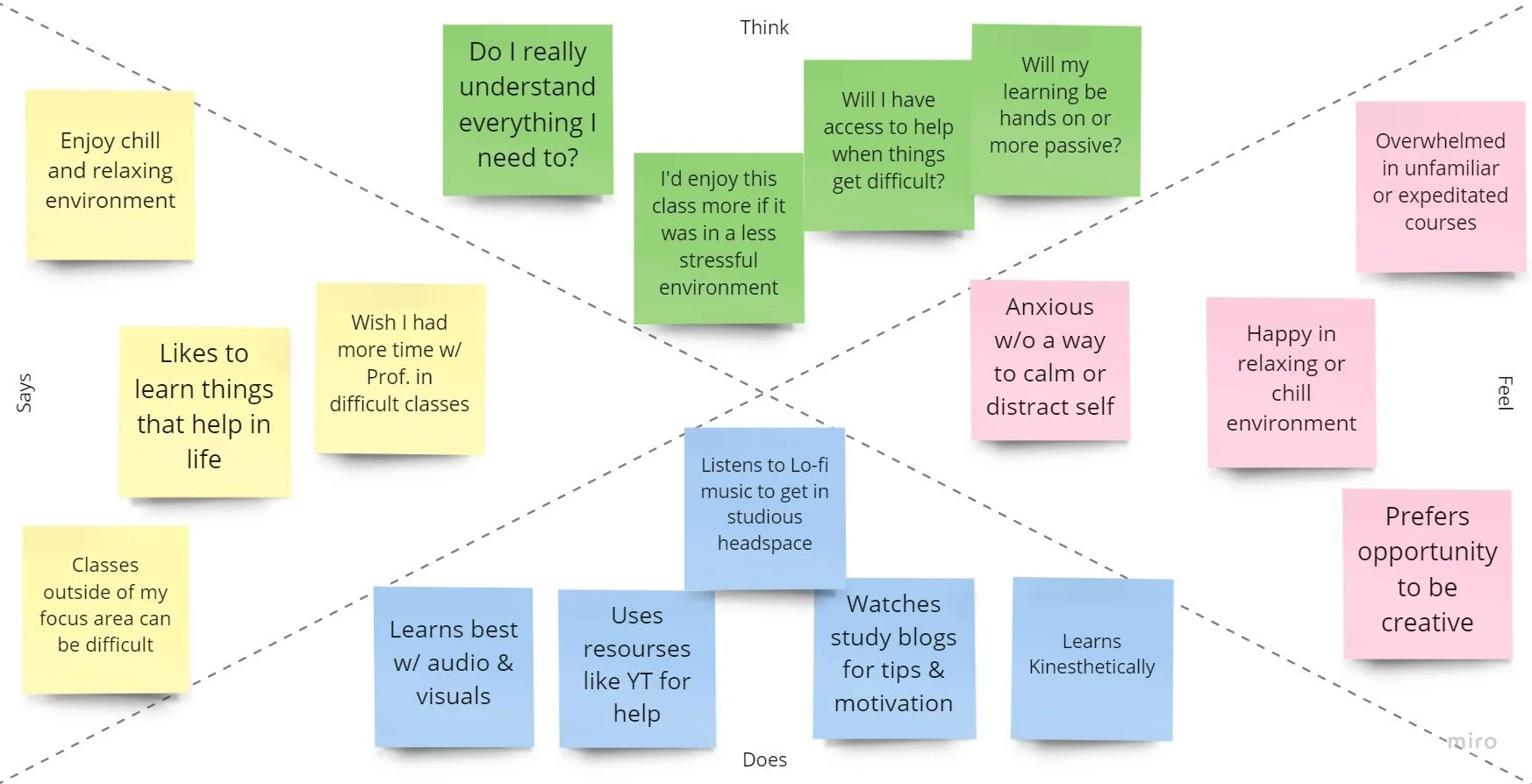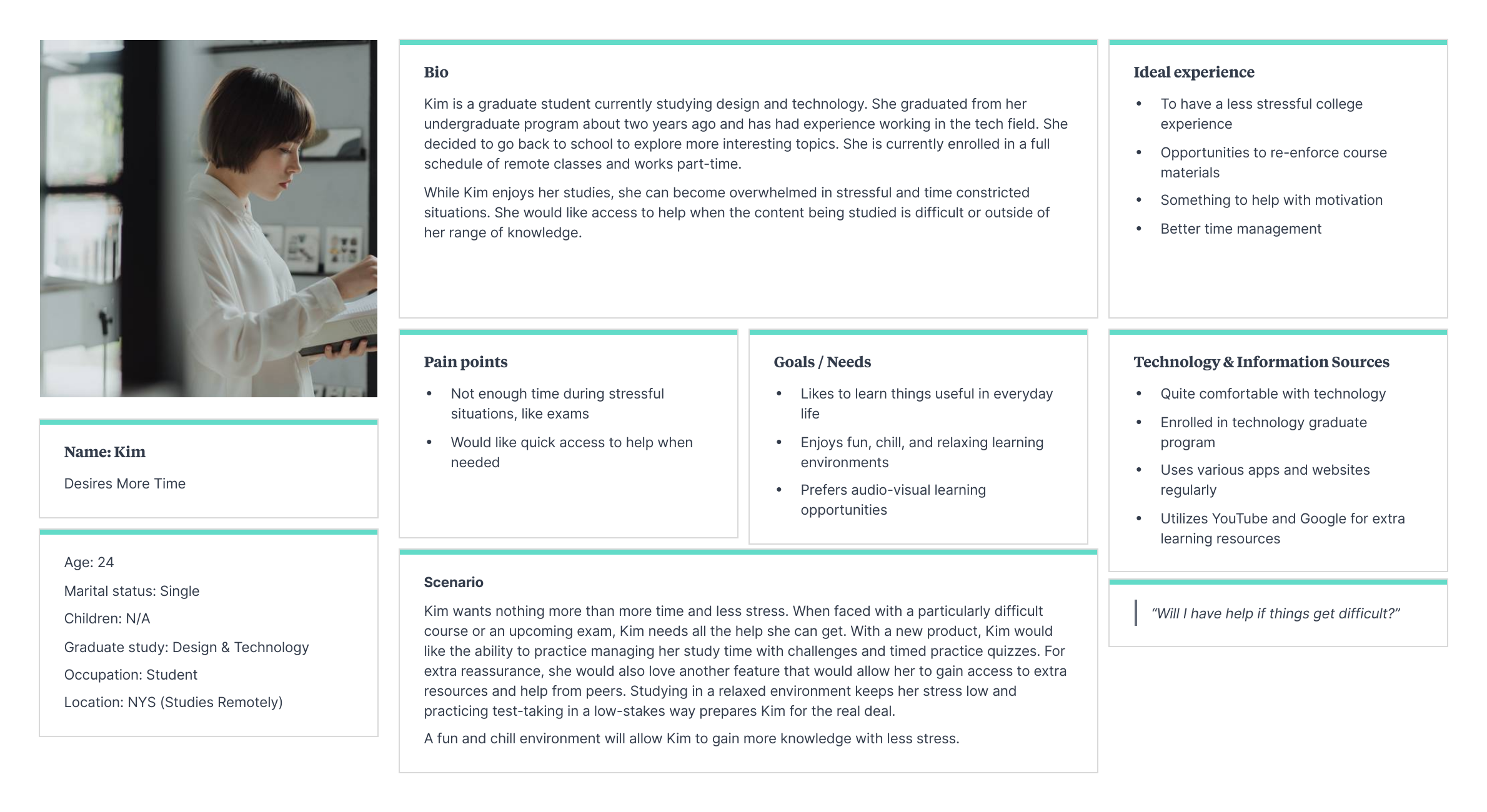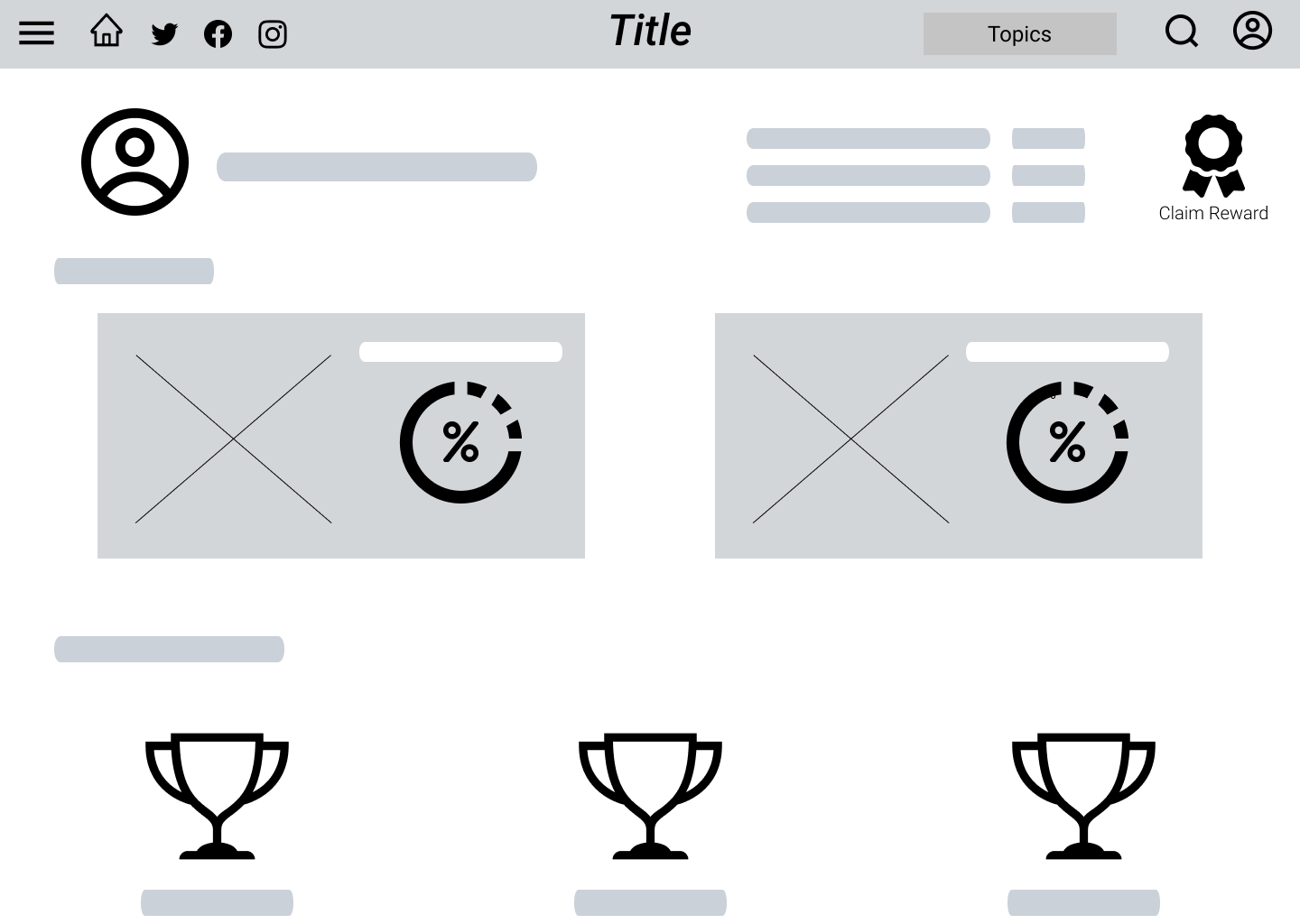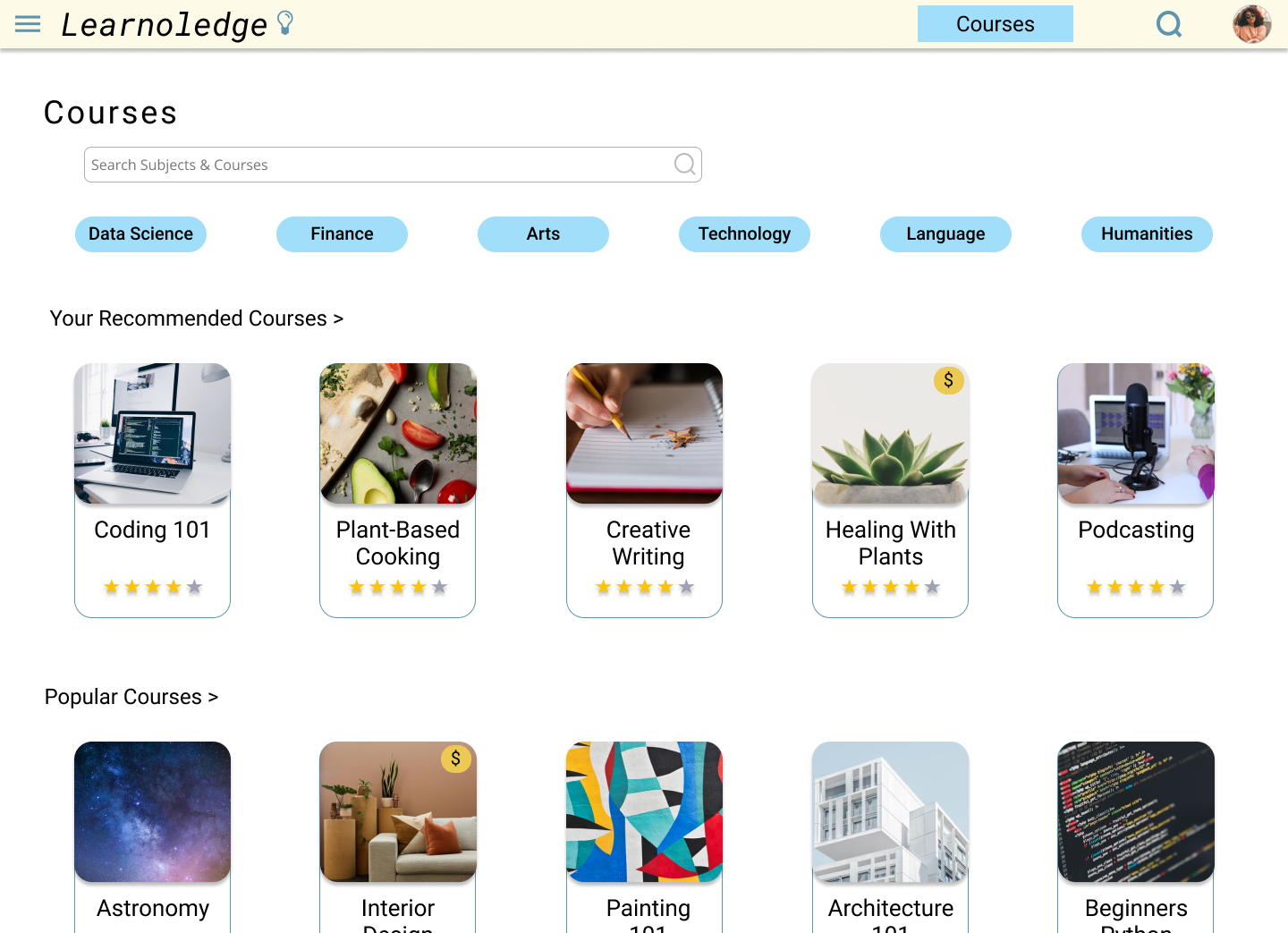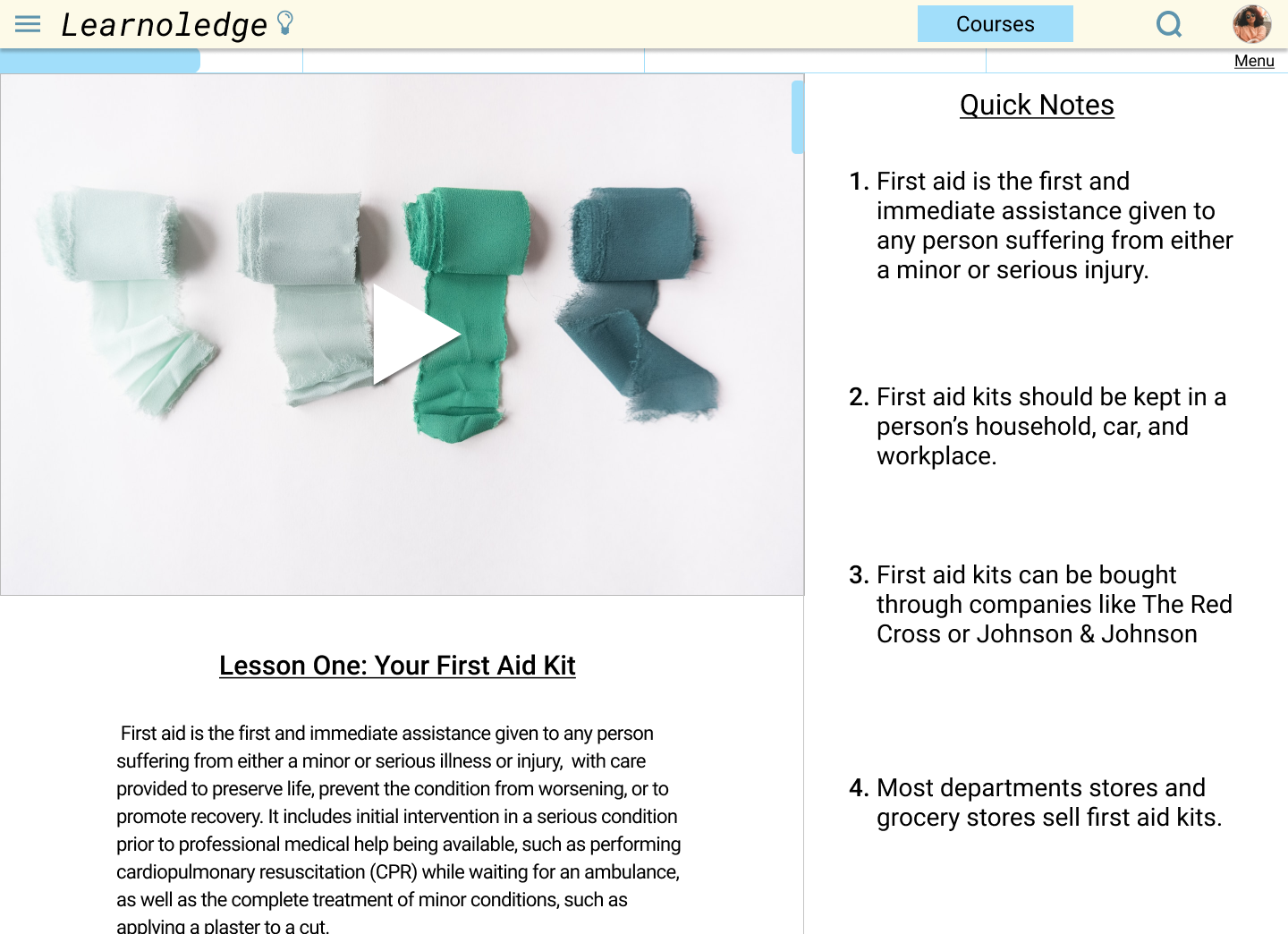Learnoledge
Product Description
Learnoledge was designed with the hope that it would help students and lifelong learners reach their educational goals. It is a one-stop-shop where people can take courses, study topics they are interested in, and connect and learn with like-minded people.
Rationale
People learn in a variety of ways. For example, some people learn better via visuals, some prefer to read, and some like to learn by doing. For students in traditional learning environments, it is possible that one’s learning needs are not being met. It would be beneficial for learners of all types, from self-learners to graduate students to non-traditional learners to have a central learning hub that hosts a vast array of learning resources. Learnoledge’s goal is to provide a boundless resource of information, courses, and experts to a community of learners.
My Roles
Research
Wireframing
Prototyping
Usability Testing
Research and Analysis
I interviewed potential users to gain insight into their experiences with learning, both in a traditional sense and as a self-learner. It was found that learners, specifically in the 20 - 30-year-old age group, enjoy learning life skills as well as enjoyable hobbies. In a college environment, it is possible to fall behind more experienced classmates and extra support is not always available. The experiences and perceptions of the interviewees will help in creating a product to support learners when help may not be readily accessible. I was able to use information gathered from interviews to create an empathy map, a user persona, and a user journey map to represent young college students that need extra support to reach their learning goals.
Empathy Map
User Journey Map
User Persona
Design
Wireframes
The research I conducted revealed that there needs to be a place for learners to feel supported. This place would have to cater to different learning styles and levels of knowledge. While brainstorming, I found that a product that combines the features of a Massive Open Online Course website such as Coursera or EdX, a studying website such as Spark Notes, and an organization app such as Evernote would meet the needs of today’s students. I sketched wireframes to better understand how such a product would look and how it should be organized. This website would feature online courses led by experts and live workshops where students would get their questions answered quickly. Study groups are another feature that would allow learners to gain support. Finally, users of the site would be able to create their own notes and refer to them when necessary.
Original Sketches
Home Page
Course Selection
Study Page
Digital Wireframes
Home Page
User Page
Study Page
Mockups
I used the wireframes to create high-fidelity mockups to further explore how to help learners gain more support. I expanded the users’ personal page to include saved courses and the study groups they joined. I also added a detailed course page to display the typical content that could be found in the more formal aspects of the website. Also, a course listing page was added to show how learners can find the subject they are interested in.
Home Page
Course Selection
Course Page
Solo Study Page
User Status Page
Prototype and Usability Testing
I conducted in-person usability tests with three individuals to ensure the website was usable and enjoyable. The participants were able to navigate the website with ease and were able to complete tasks such as enrolling in a course, locating the user page, and saving a course they were interested in. They did have difficultly locating where they would change their study preferences, so that is something that needs to be corrected.
Future Improvements
The website could be improved by ensuring there are multiple ways to navigate to the important features and by providing more labels throughout the site. Another improvement would be to better indicate where rarer features, such as preferences, are located.
Please check out my prototype.
Lessons Learned
I learned to consider user flow when designing products and when running usability testing. It is important to consider the ways people are used to navigating various products. I also learn that different insights can be drawn from different forms of research and testing. I was able to learn new things from the empathy interviews and apply them to other user experience techniques (the empathy map and user journey map). In the future, I will be sure to learn about more testing and research methods to better plan and design products.


